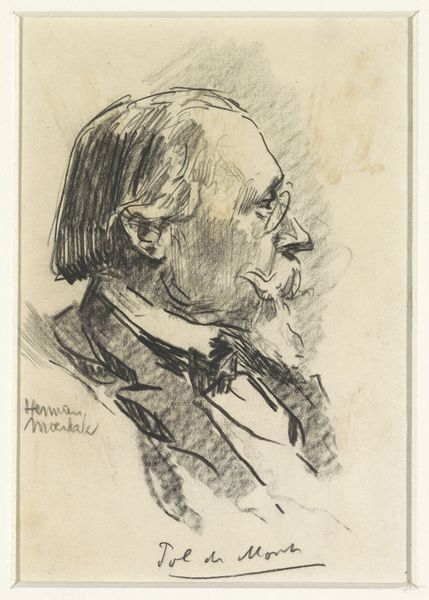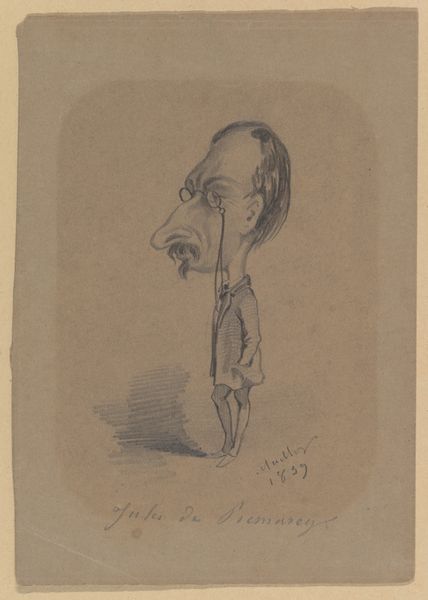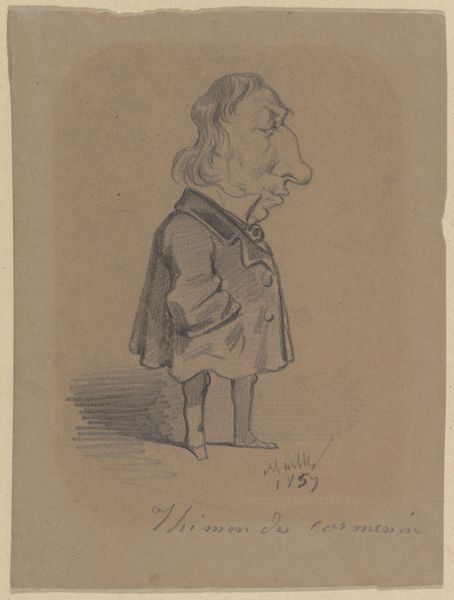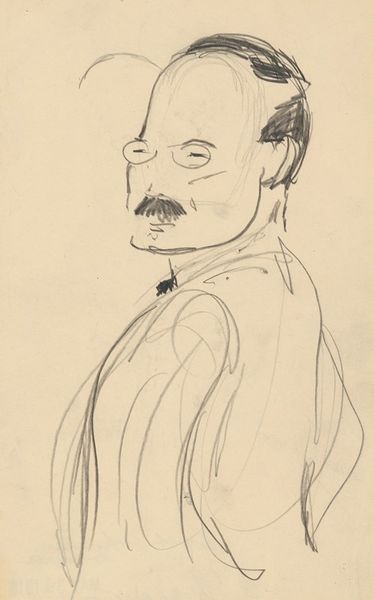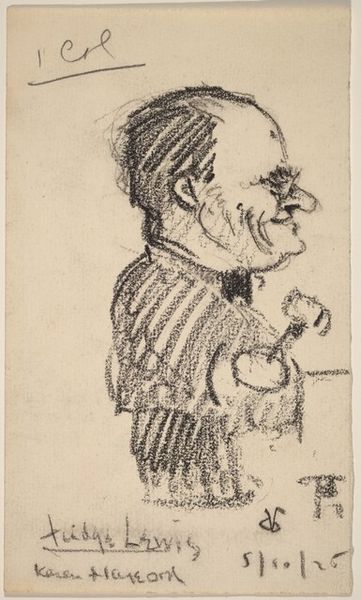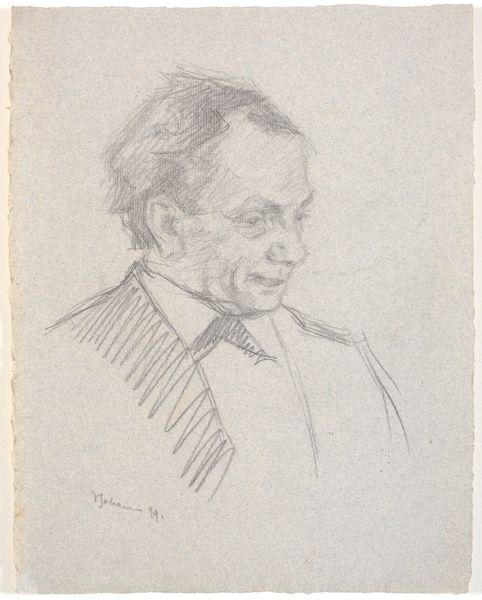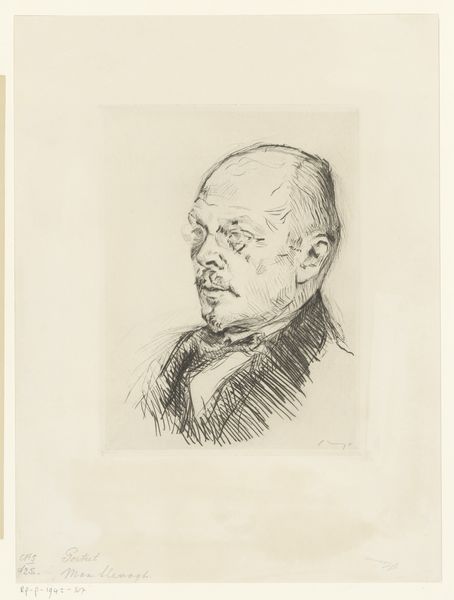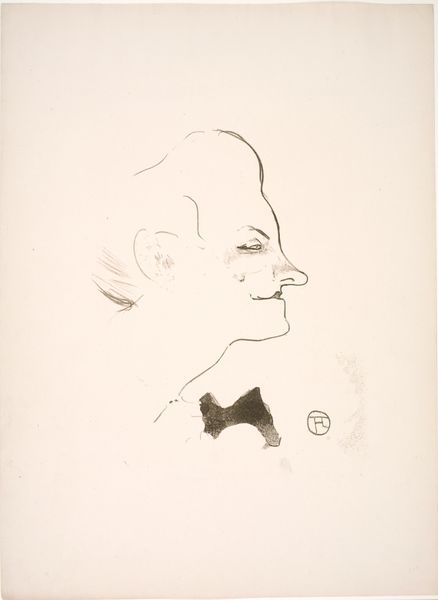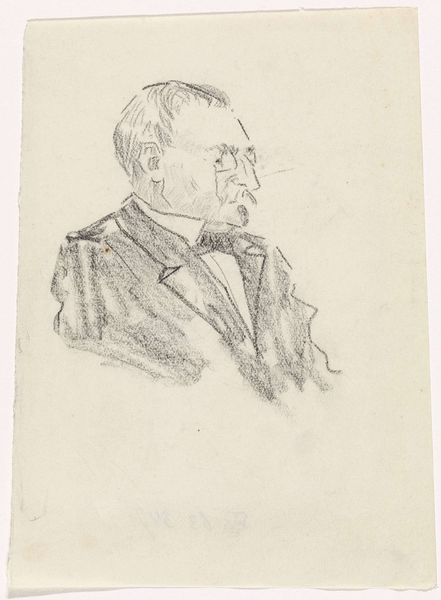
drawing, pencil
#
portrait
#
drawing
#
caricature
#
pencil
#
portrait drawing
#
academic-art
#
realism
Dimensions: Sheet: 7 1/4 x 5 5/16 in. (18.4 x 13.5 cm)
Copyright: Public Domain
Curator: Hippolyte Mailly's 1859 pencil drawing, "Caricature of Paul Meurice," currently resides at the Metropolitan Museum of Art. It's quite striking. What's your initial read? Editor: The disproportion immediately grabs the eye. The oversized head juxtaposed with that almost childlike coat and spindly legs creates a powerful visual distortion, emphasizing specific characteristics. It has an unsettling, almost mocking quality, wouldn't you say? Curator: Absolutely. The exaggeration speaks to the culture of critique present at the time, revealing how public figures like Meurice, a well-known playwright and novelist connected to Victor Hugo, were represented and perhaps even judged. It prompts us to think about celebrity and the artistic license to comment on and shape public perception. How do we view this image through the lens of celebrity culture and satire, both then and now? Editor: I am especially drawn to how the artist manipulates form here, almost like a semiotic game of substitution. The nose, that commanding beak, steals attention, effectively shrinking everything beneath and calling the entire balance into question. Do you agree? Curator: Precisely. Think about the political climate then: post-revolution, rise of the bourgeoisie. This drawing could be read as a subtle critique of the established order. Editor: What interests me is how the relatively academic precision of the line itself contributes to the caricature's power. It’s not sloppy or carelessly rendered, no. There’s calculation, an intellectual rigor almost, underpinning its visual commentary. Curator: And consider Mailly's position—a lesser-known artist lampooning a celebrated figure. There’s a power dynamic worth exploring. What motivated such pointed expression? Editor: It makes me appreciate that, ultimately, art serves to transform reality through an artist's calculated eye. It certainly speaks volumes, not only through context, but visually. Curator: I think you've beautifully articulated why, even over a century later, this drawing still possesses the capacity to both amuse and provoke thought. It challenges us to question perception, representation, and the complex relationship between the individual and society.
Comments
No comments
Be the first to comment and join the conversation on the ultimate creative platform.
